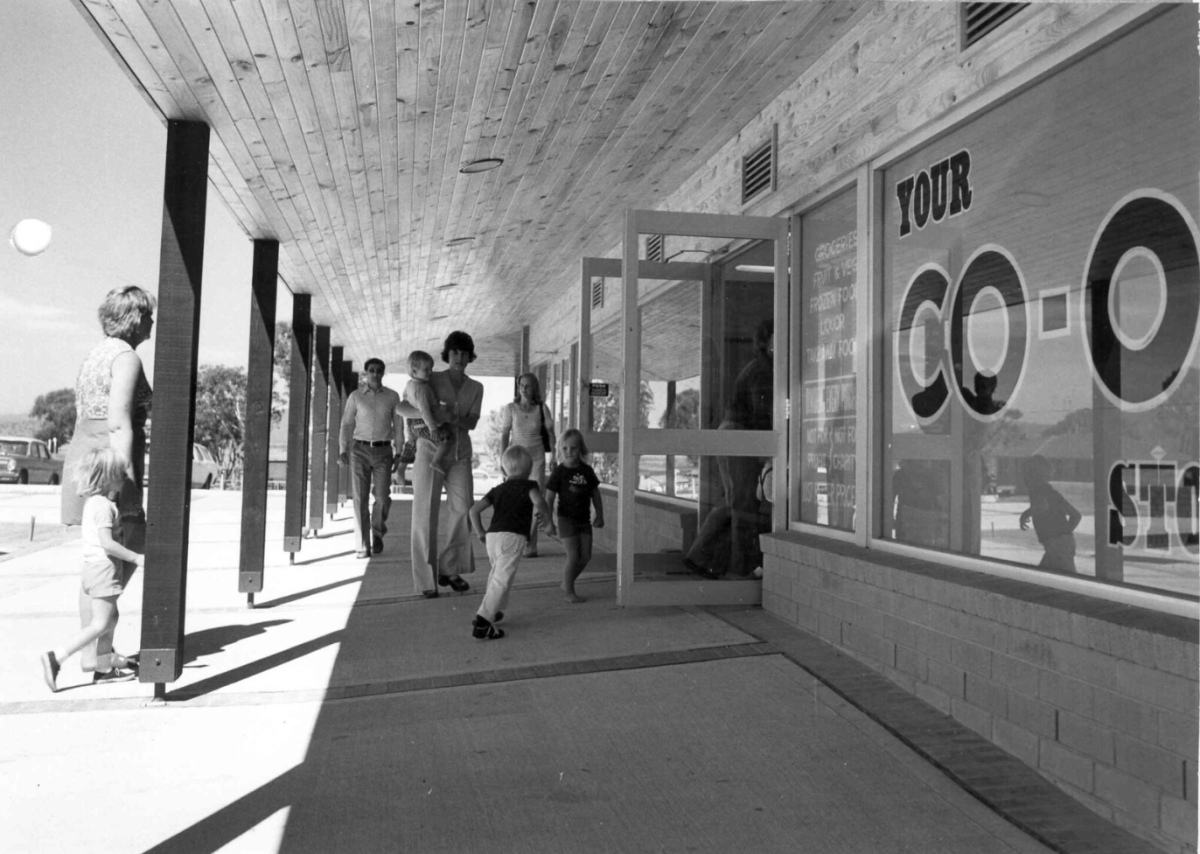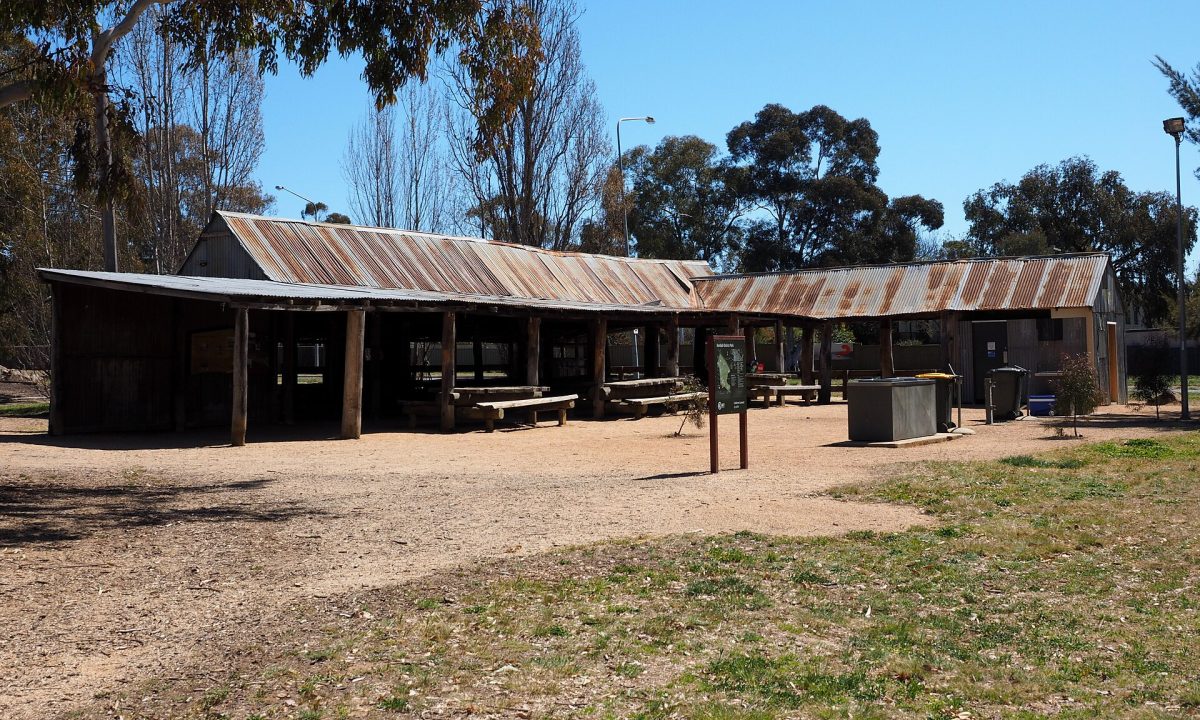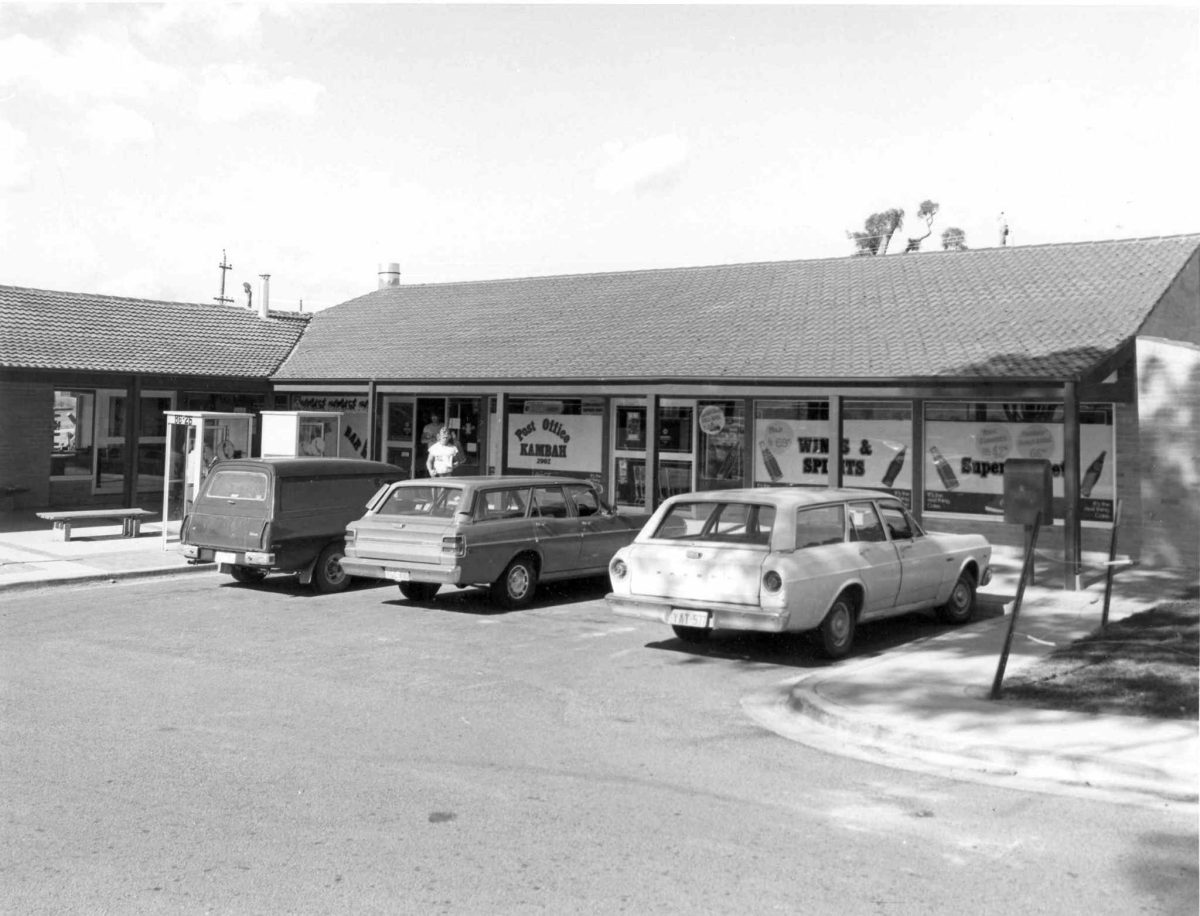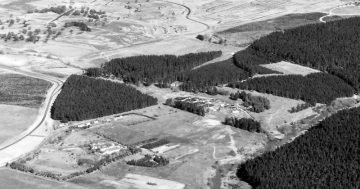
The Kambah Co-op was founded in 1975 to protest the suburb’s overpriced supermarket. Photo: ArchivesACT.
Kambah was named “Canberra’s booner capital” in 2009 by now-defunct satirical news website The Punch when the anonymous author highlighted the “number of V8 Falcons on the nature strip, wandering terrier dogs, and the enormous size of the local Burns Club”, but there’s a lot more to Kambah than that, according to local Louise Curham.
The loyal resident of 10-plus years is organising a series of events this year to mark 50 years since Kambah’s first residents began moving in in June 1974.
Louise has already spent more than four years constructing a digital map of the entire 1130-hectare suburb, complete with video, audio, text and image entries on various locations so users can tap on an area to learn more about it.
During research for these entries, she would ask everyone the same question: “Is there something about Kambah you know that you would like other people to know?”
She says the answers have been fascinating.
“People from the outside would think Kambah is surely a place you’d like to leave. But I’ve learnt this is not the case. There are a lot of second-generation Kambah people who love it.”
The suburb carries its name from the former Kambah sheep station, belonging to the Bennet family – Canberra aristocracy for their time.
“Kambah Homestead might have been part fibro, but it was very beautifully decorated and had pillars out the front and a sweeping driveway and swimming pool,” Louise adds.
“Life in early Kambah was pretty nice.”
Come the early 1970s, and with then prime minister Gough Whitlam massively expanding the size of the public service and Canberra’s population exploding 10 per cent year on year, the National Capital Development Commission (NCDC) needed somewhere to put all the young families.

The Kambah Woolshed. Photo: Wikimedia Commons, Nick D.
Rumour has it Kambah ended up so big because some public servant forgot to divvy it up into four suburbs, but in reality, it – together with Wanniassa next door – was planned as big territorial units made up of large blocks. They became known as ‘Nappy Valley’.
“The NCDC held this seminar, where they brought together a whole cross-section of age groups to learn what kind of suburb people wanted to live in,” Louise says.
“They were very much thinking about mental health. They were really trying to think about a place that would be good for people.”
To make room, the creek known as Village Creek was put underground through a pipe, and a large trap was built at the Lake Tuggeranong end to prevent upstream pollution from making its way into the lake – an engineering first for Canberra.
However, when Whitlam was dismissed and his successor Malcolm Fraser got to work slashing 17,000 government jobs, the prediction of 40,000 people in the valley by 1980 collapsed. All the houses were eventually built in subsequent decades but at a much slower rate.
“It’s really interesting how these big-picture forces play out in our everyday lives that we never think or look at,” Louise says.
Kambah had its own grocer from the beginning, but it didn’t take long for residents to hit back at the overpriced goods by forming their own co-op-style supermarket in 1975, with shares available for $10 each.
Located on Mannheim Street, this was the first and only supermarket in Tuggeranong to be started and owned by a community and the second retail store to open in Tuggeranong.
A Kambah primary school also became the first in Canberra to feature a computer lab because one of the student’s fathers happened to work in the right circles and agreed to help source the equipment.

Kambah was designed to have several local shopping centres, even if some have since folded. Photo: ArchivesACT.
Of course, there are less glamorous accounts, too. Like one from the 1980s, when a male “exposed himself” to a young horse rider. And former pizza delivery drivers who remember the ‘munchies’ houses, where the occupants would round out their marijuana smoking with lots of pizza.
“To find ways to visualise stories like this without necessarily pinpointing them on the map is an interesting challenge,” Louise says.
But the vast majority are positive.
“I mean, like all suburbs, people are busy, and there are lots who live in Kambah who don’t really connect, but then there are others for whom this is a really precious place,” she says.
“And as we have all these planning conversations across the ACT at the moment, if those people don’t speak now, we’re going to get what they give us.”

Kambah has a pretty side. Photo: File.
Louise is hosting a ‘Kambah 50’ event in the foyer of the Tuggeranong Arts Centre on Saturday, 17 August, with a number of other events to come.
‘A Long Table Picnic Lunch’ will be held on Sunday, 18 August, and a dog-friendly community picnic on Sunday, 8 September, with a winter lantern walk, bush dance, and sunrise walk up Mount Taylor (with champagne at the top) also in the works.
*Now, if you’ve come all this way waiting for the claim about Kambah being the biggest suburb in the southern hemisphere, it turns out that’s not true.
Not even close.
In 2017, the ABC wrangled data from PSMA Australia that revealed not only is the Gulf of Carpentaria technically a ‘suburb’ and larger, but there are another 20 to 30 urban suburbs with a similar population size and density to Kambah, but over a larger area. And that’s just in Australia.
Sorry.
Visit the Kambah Turns 50 website or Facebook page for the full program of events. Explore the Kambah People’s Map online.
Original Article published by James Coleman on Riotact.


